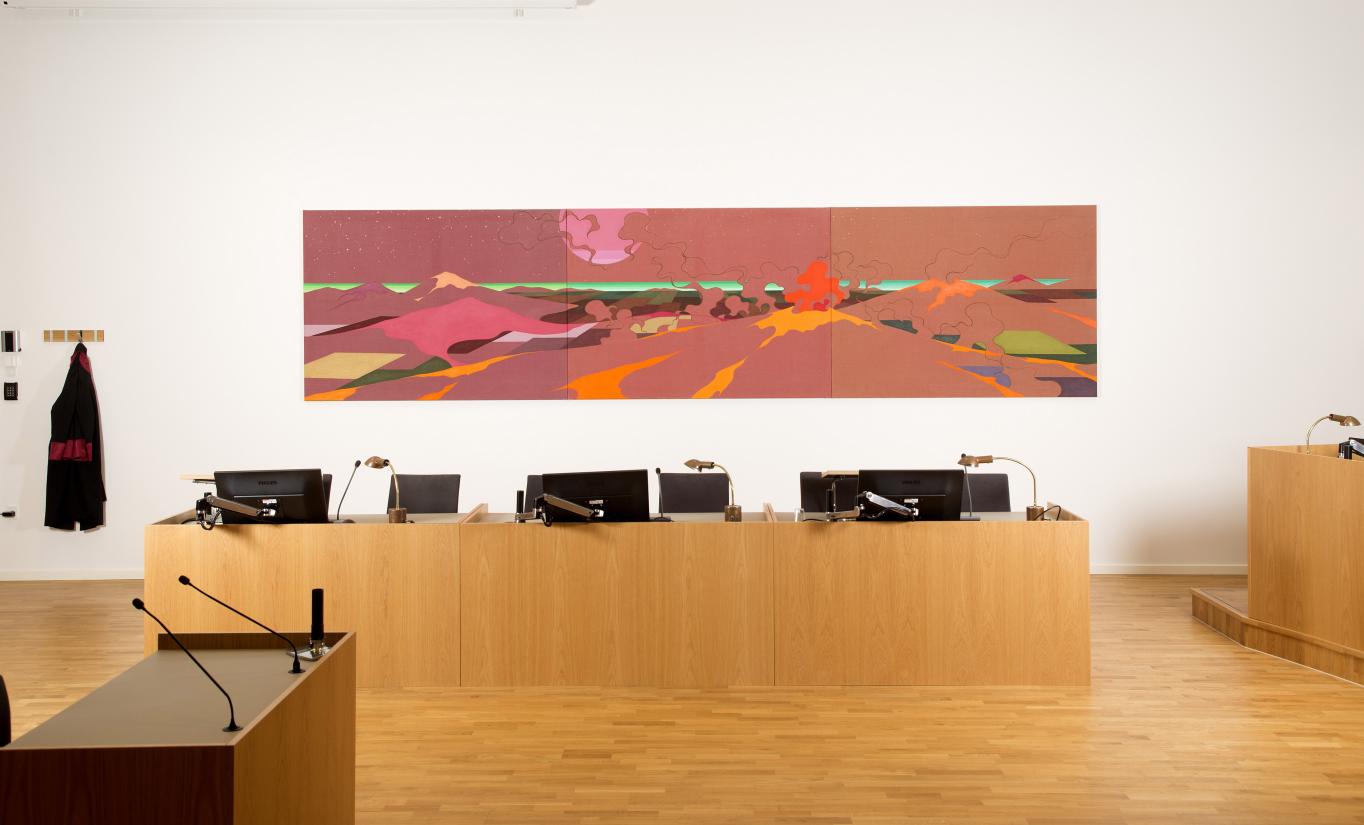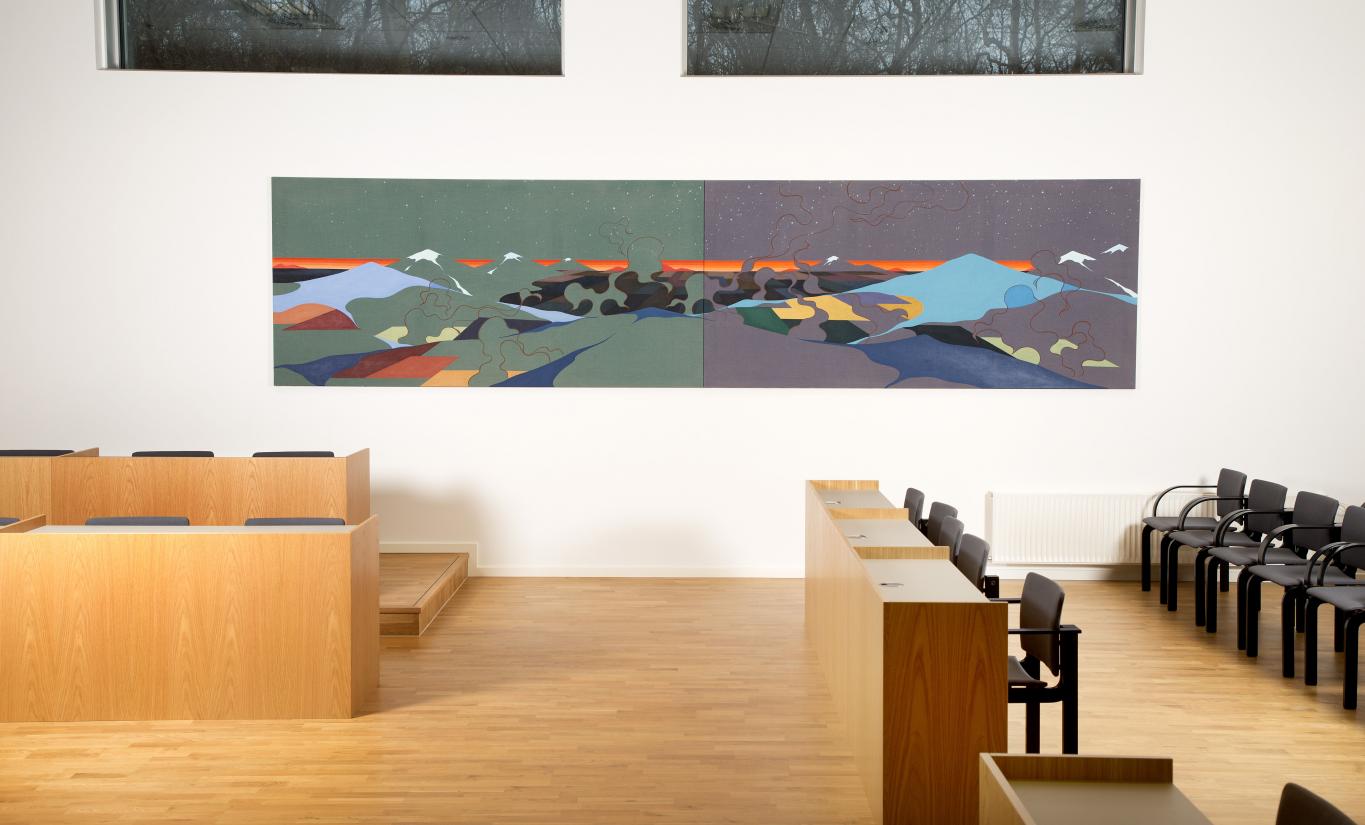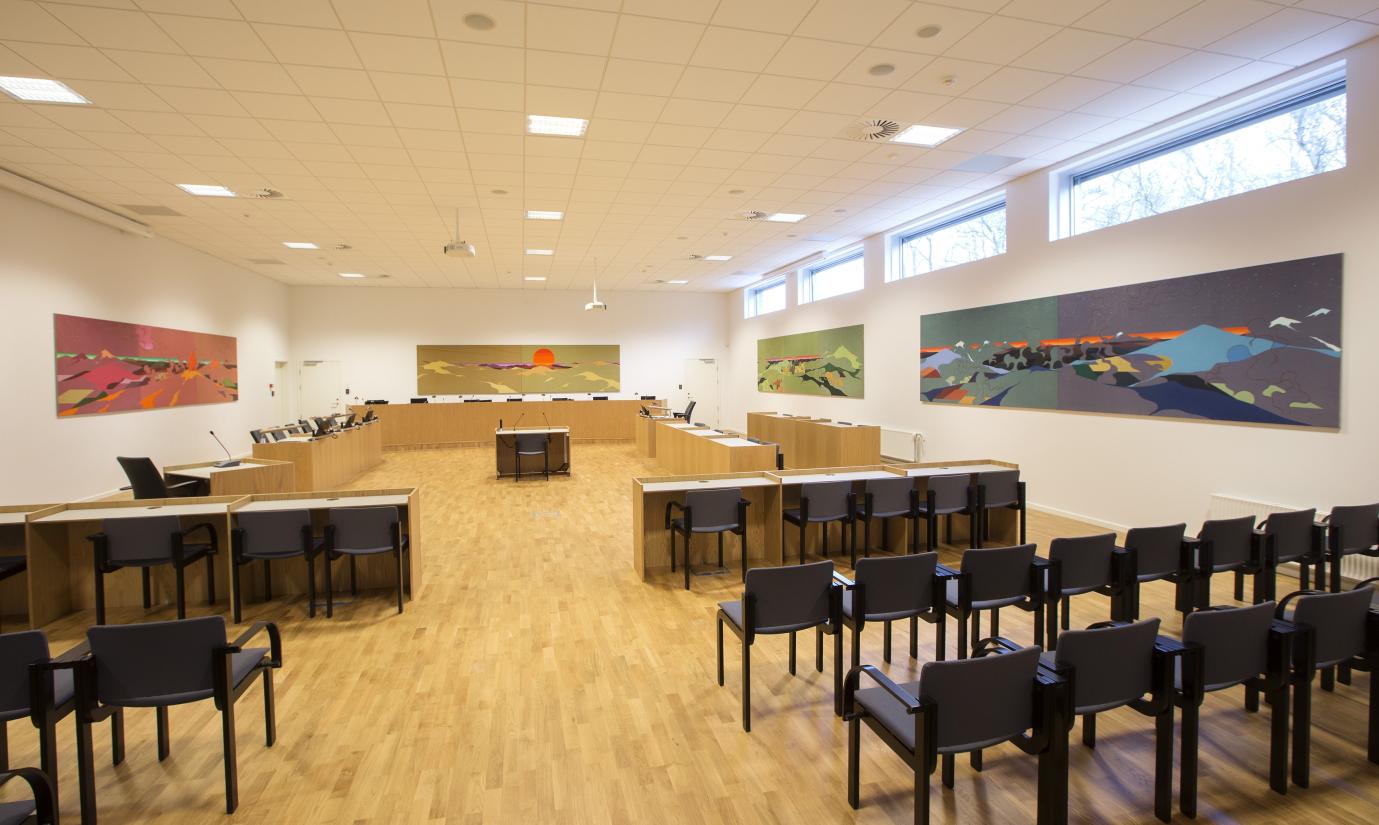In many regards, Eske Kath’s decoration for the court room of the High Court in the city of Kolding lies in extension of his wall installation from 2012 for the lobby of the Kolding courtroom building. While the lobby decoration consists of stacks of coloured houses that, despite their chaotic entanglements support and stabilize each other, Kath’s new decoration consists of four large, expansive landscapes. The paintings have the same shape as the courtroom windows. Positioned high on the wall, the windows flood the room with daylight but offer limited outlook. In the courtroom, the paintings thus act as a sort of parallel windows to the outside world, as openings for mental escape and reflection.
A moment’s contemplation
‘To ordinary people, the encounter with the courtroom may mark the culmination of a very rough time in their life. To me, it was essential that the art in the room should not be aggressive, attention-seeking or hectic. Instead it should offer a moment’s contemplation, a chance for the mind to briefly escape the stressful situation. Towards the horizon,’ says Eske Kath.
Holistic lines and empathy
The suite of paintings in the courtroom complements Eske Kath’s decoration in the lobby. Here, Kath has created the colourful houses as individual entities that may exist in a chaotic system, but which nevertheless all have a role to play in preventing the community from tumbling down. In the artist’s interpretation, the new paintings represent the landscapes that the houses come from or may be about to settle in. Mountain peaks, sea, plants and dunes are some of the natural elements that Kath suggests in his landscapes, whose consistent horizon and almost monochrome appearance strike a calm and balanced mood in the courtroom. Kath’s palette helps tie the room together. Seen as one, the suite of paintings covers the full colour circle, which give the paintings a subtle sense of representing a full night-and-day cycle.
‘Eske Kath not only created a decoration that brings a more coherent expression to the court building. With sublime sensitivity, he has also considered the inescapably hard and, at times, bleak reality that characterizes a courtroom. In the right form and place, art can and should offer a parallel space, a refuge from the rigours and hardships of everyday life. Eske Kath achieves this most eminently in the High Court in Kolding,’ says Karsten Ohrt, chairman of the New Carlsberg Foundation.
The president of the High Court of Western Denmark, Helle Bertung, is thankful for the New Carlsberg Foundation’s most recent donation to the High Court. ‘We are grateful for the successful decoration of the courtroom in Kolding. It is important that our courtrooms are perceived as welcoming and safe places to be. The courtroom is the place where disputes about all aspects of life are resolved; it is where crimes are examined and punished, and where the innocent are acquitted. Everyone who comes here should meet a contemporary and well-functioning setting. Good contemporary art plays an important role in creating such a setting.’
About Eske Kath
Eske Kath (b. 1975) graduated from the Royal Danish Academy of Fine Arts in 2003 and lives and works alternately in Copenhagen and New York. His works are represented in many museums and collections in Denmark and abroad. A key characteristic of his work is experiments with form, surfaces in space, figuration and, not least, colours. His paintings often consist of clearly defined figurations and ornamentation in intense colours. An overwhelming effect is created by his motives, which at first glance seem to defy gravity. Chaotic landscapes and complex stacks of houses that, nevertheless, find a balance and a point of gravity through Kath’s sense of composition and colour schemes.







